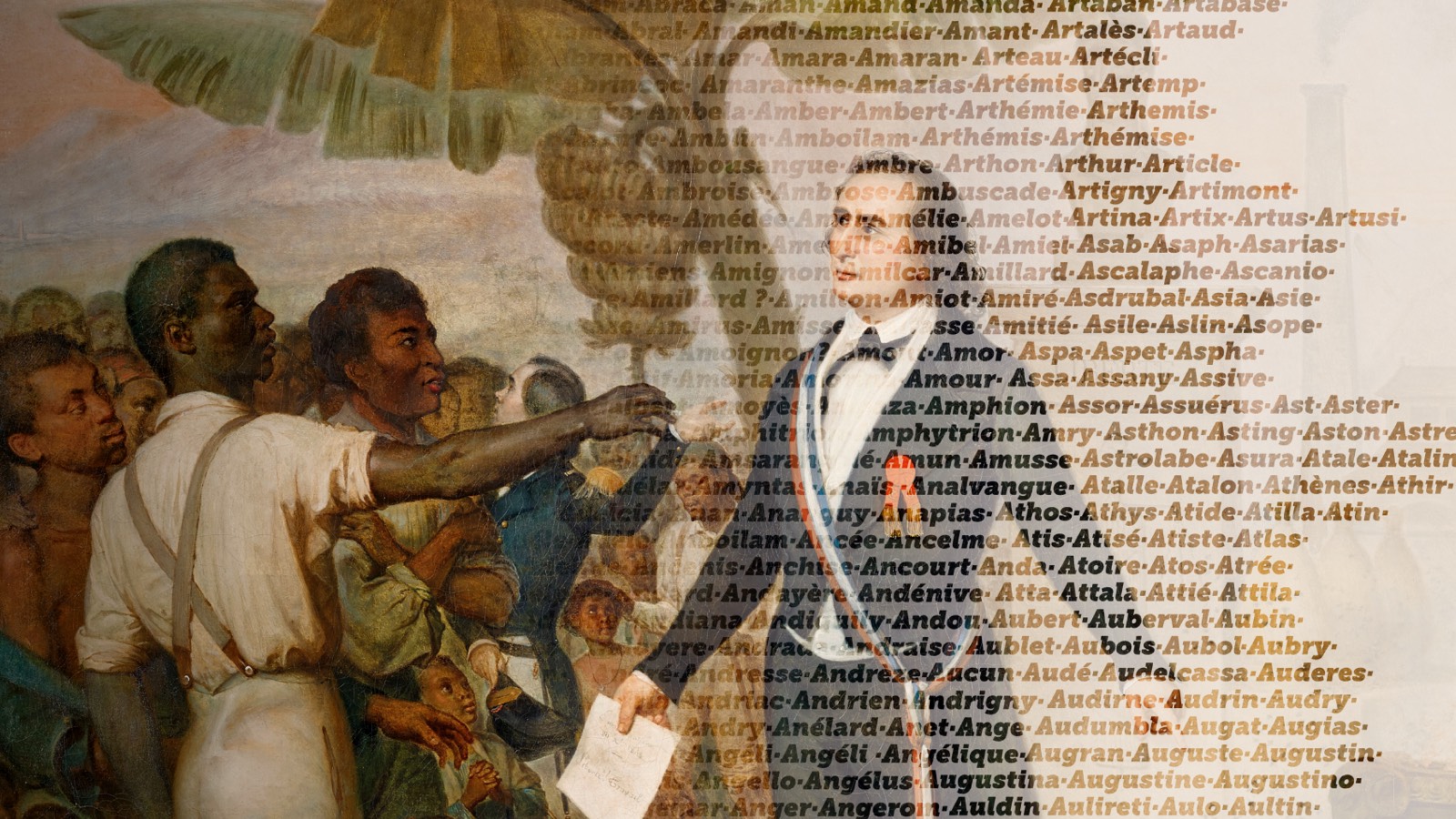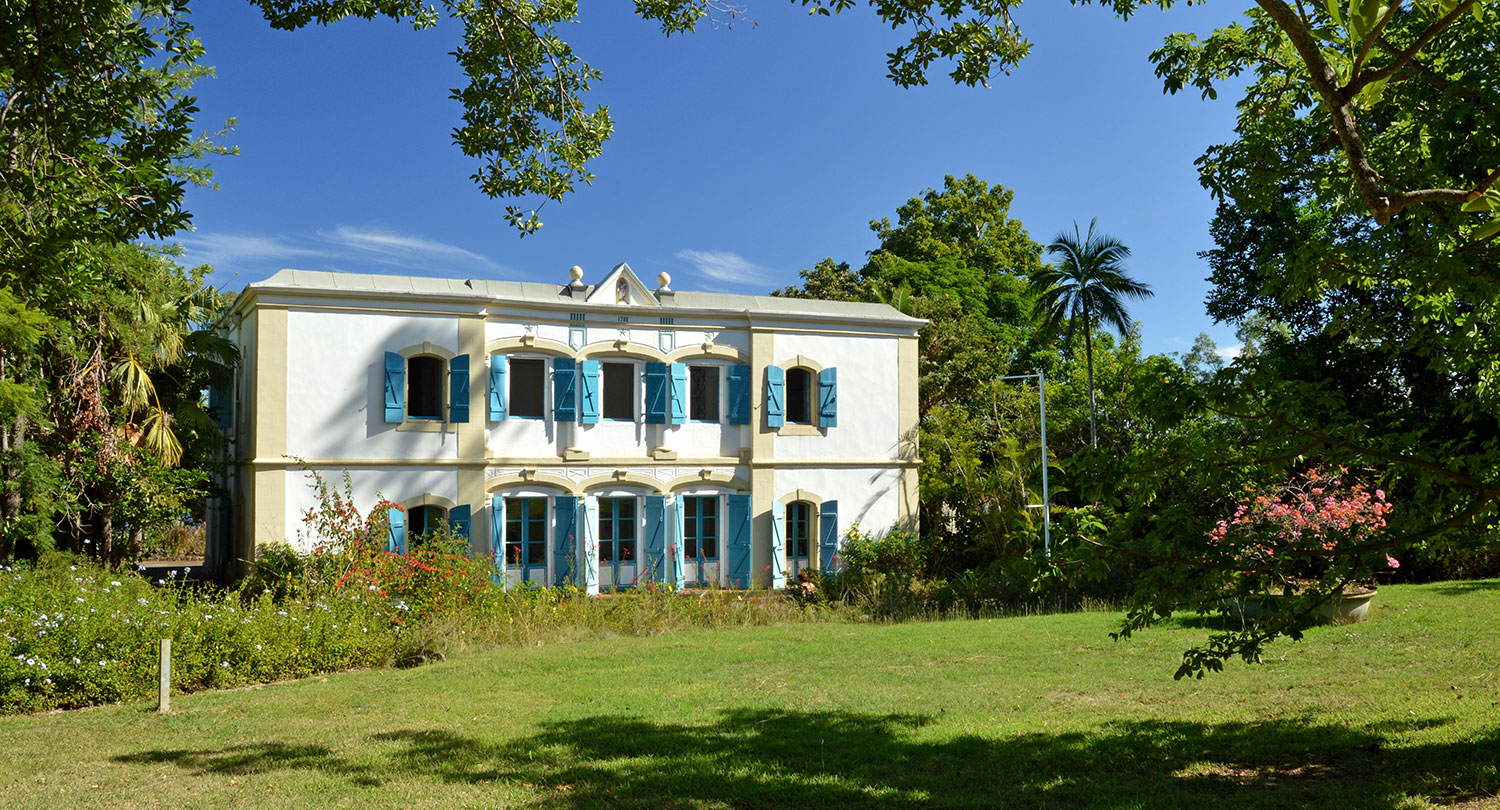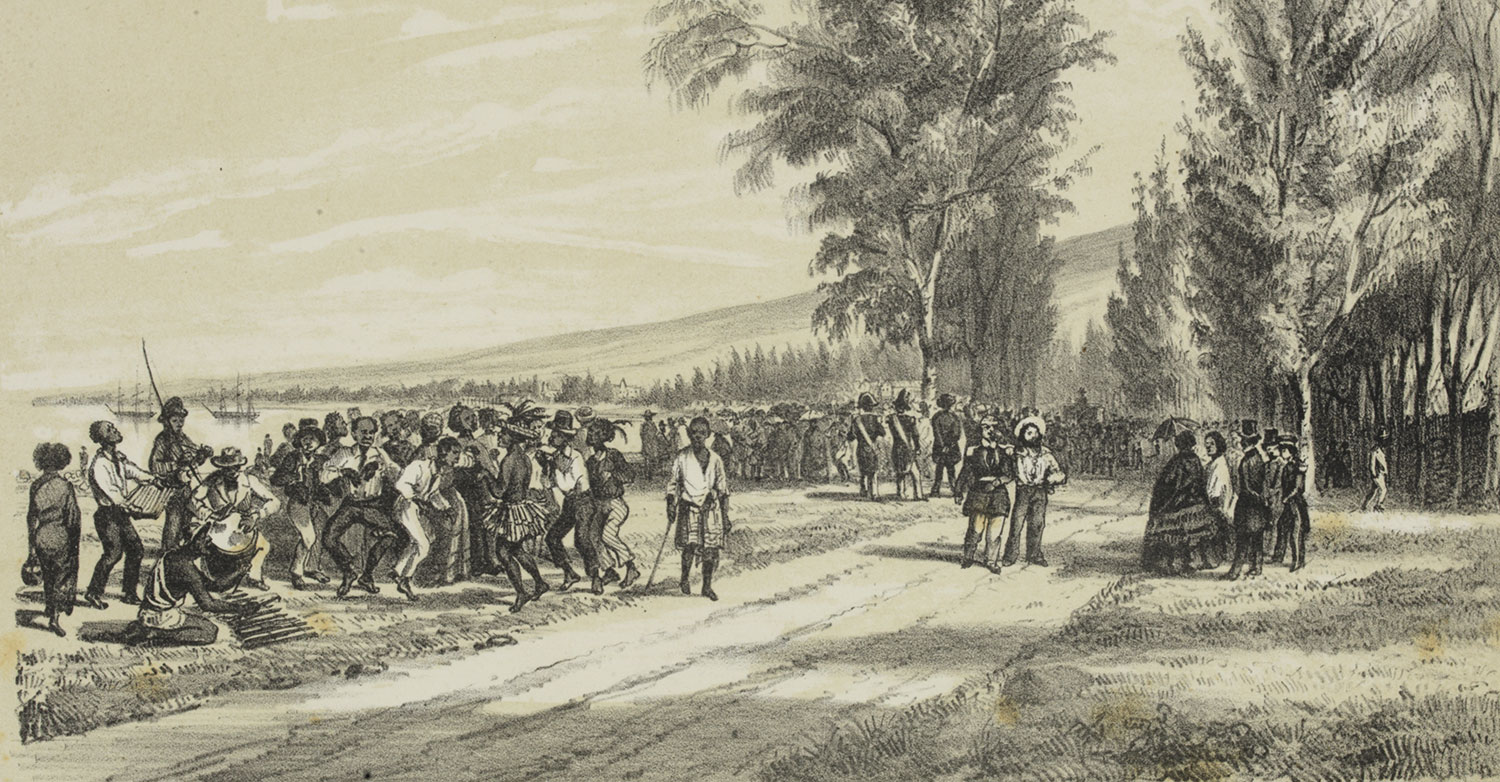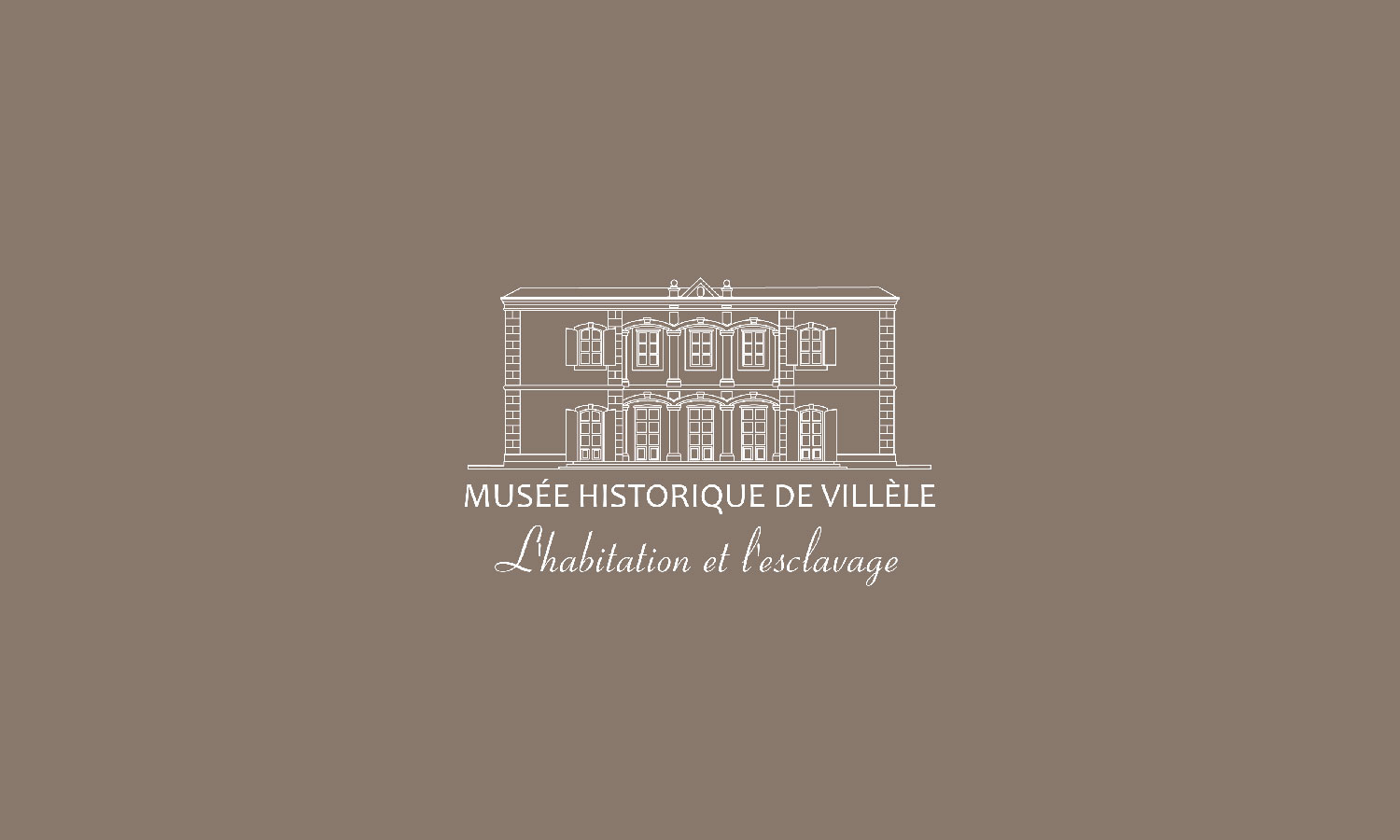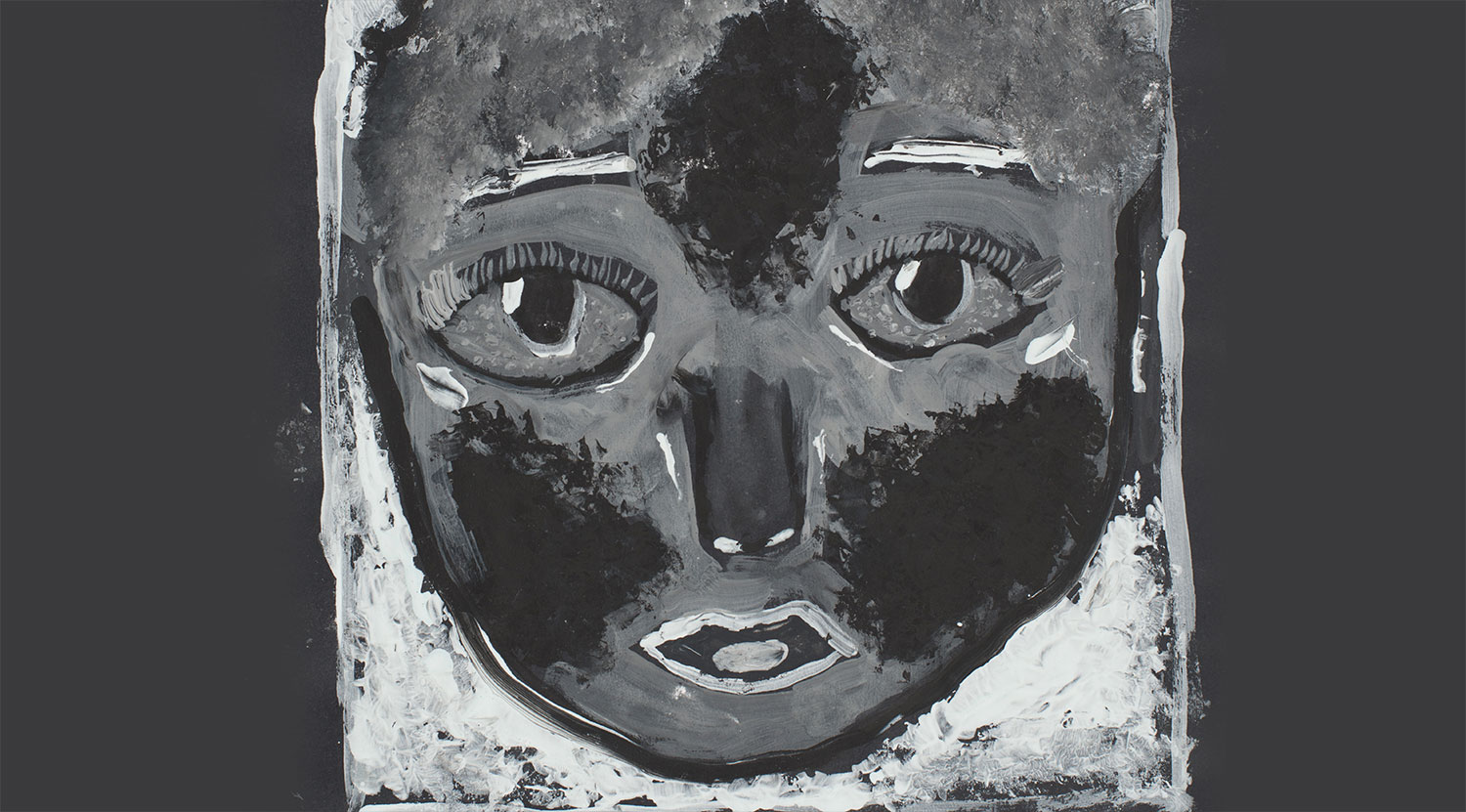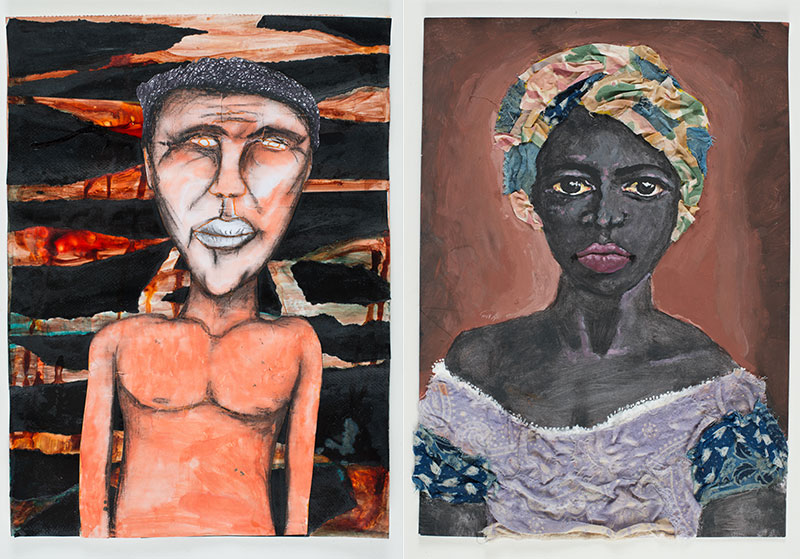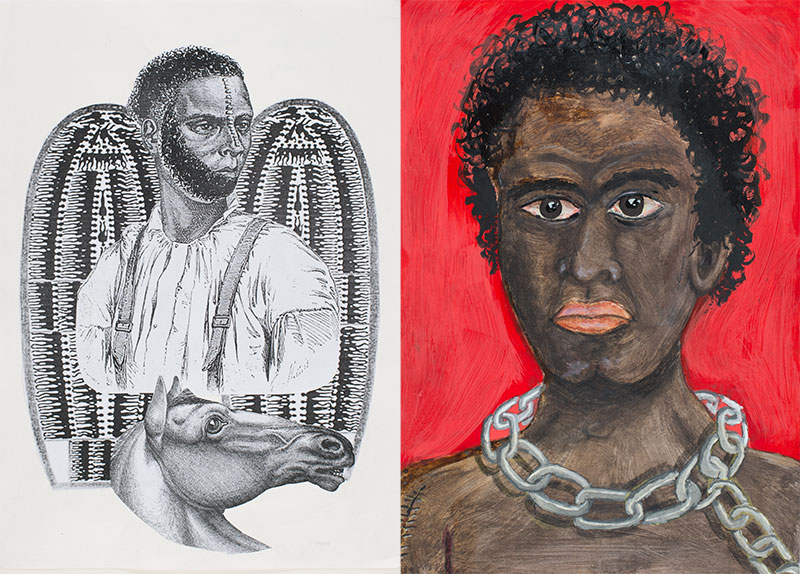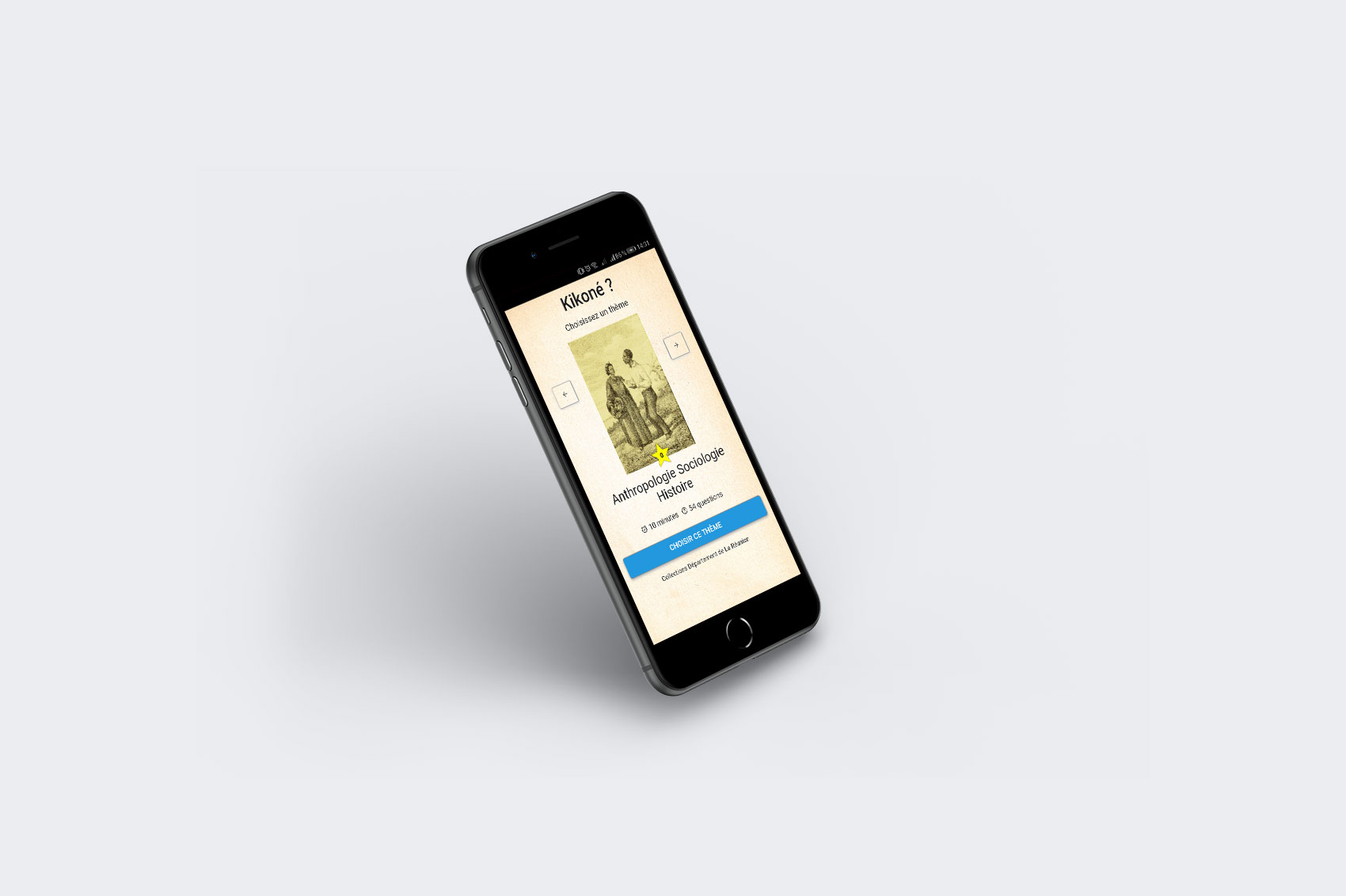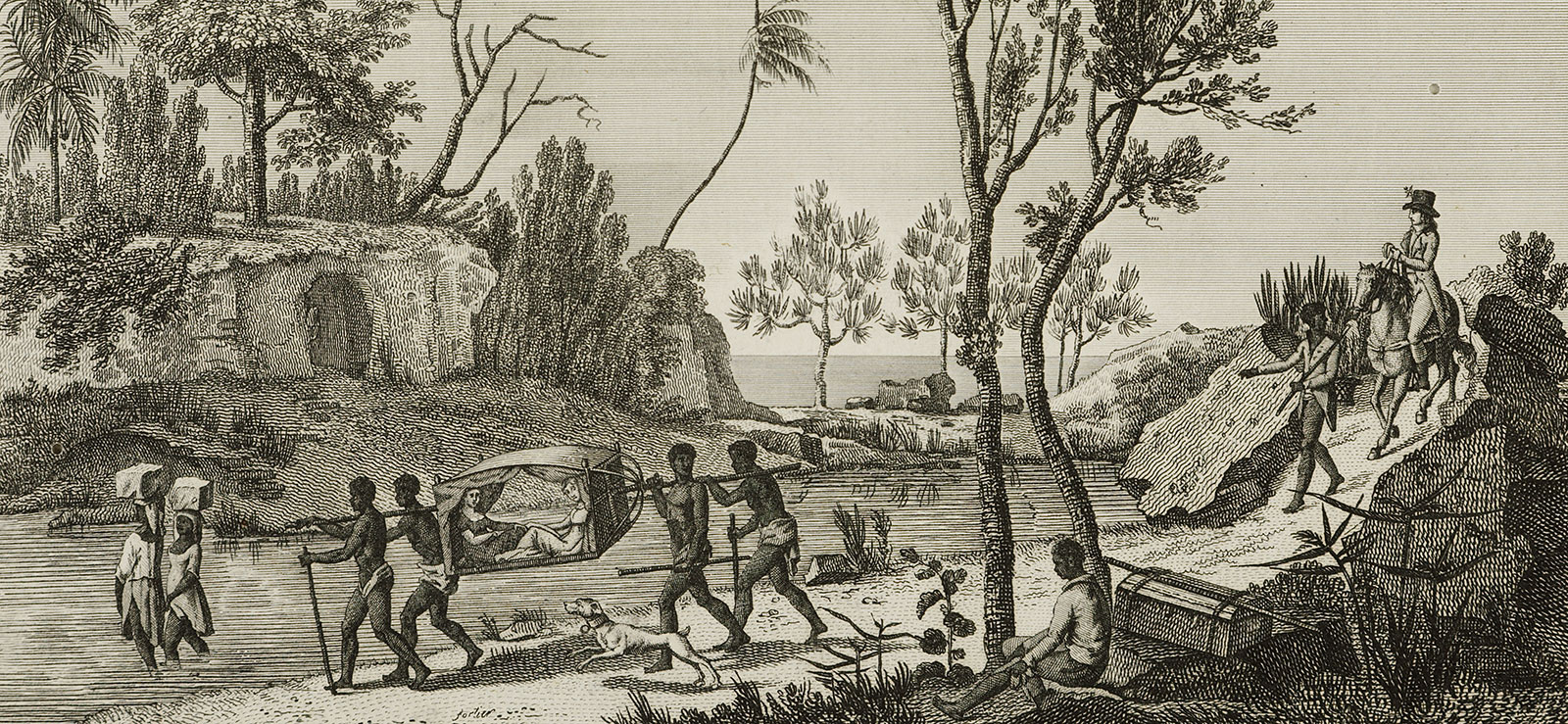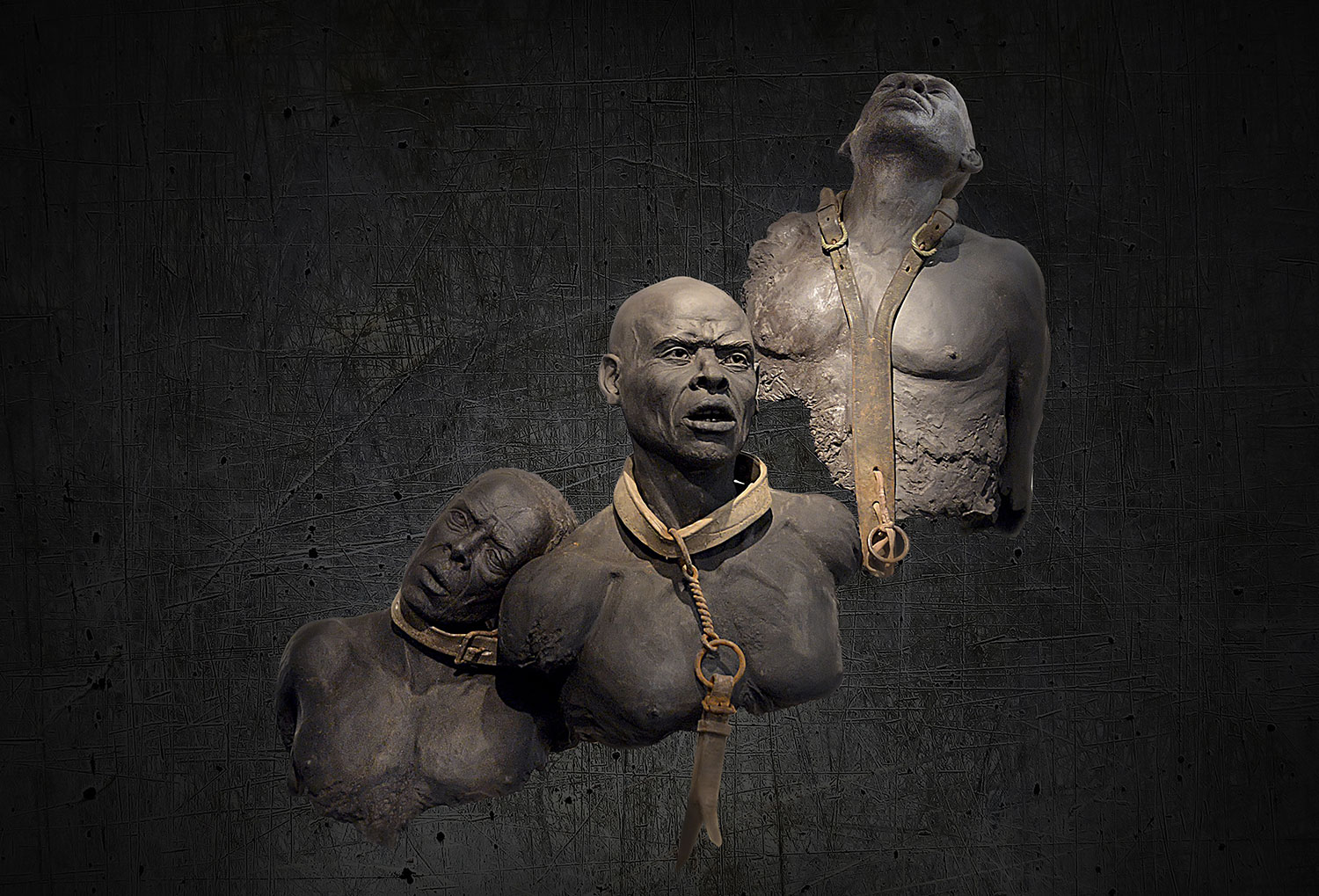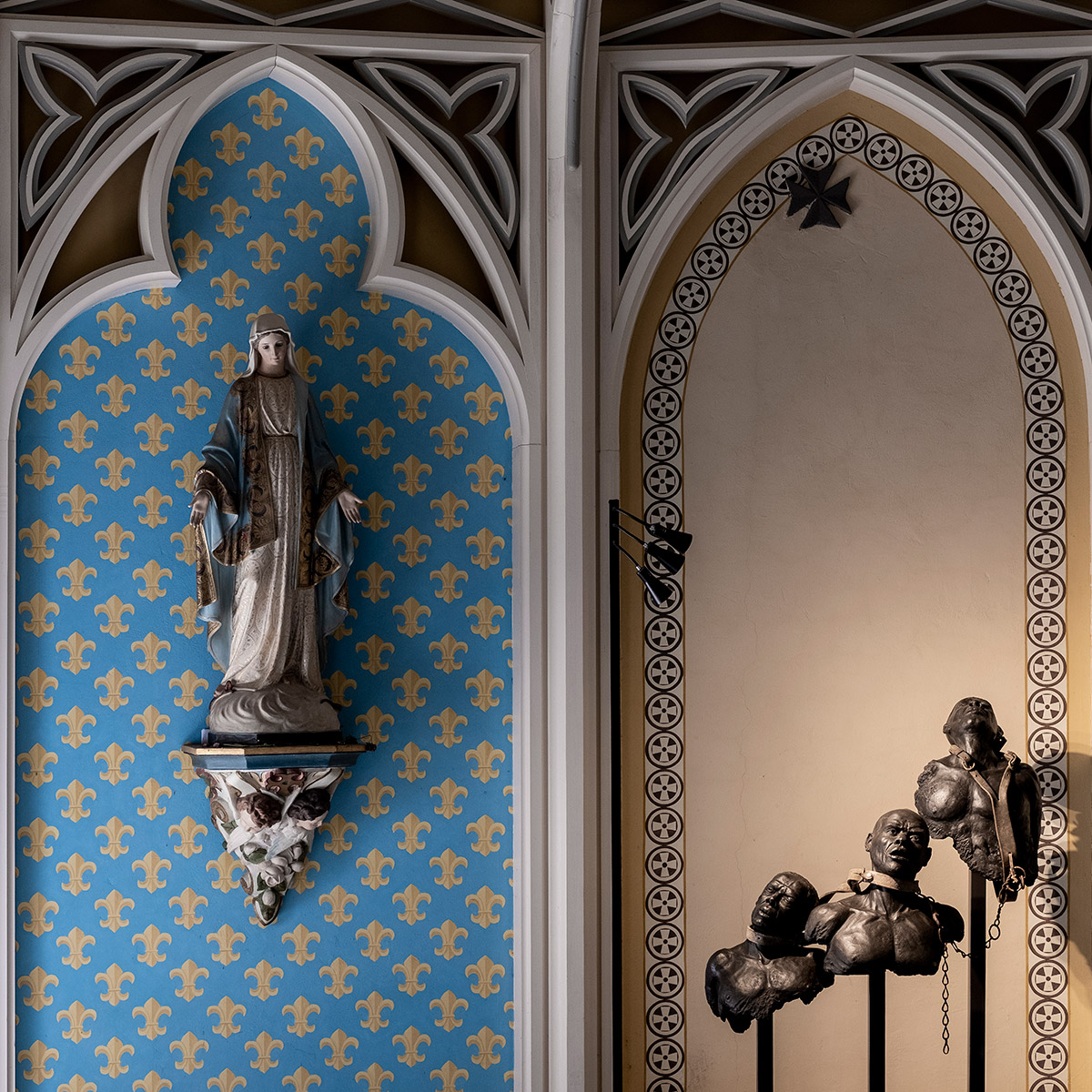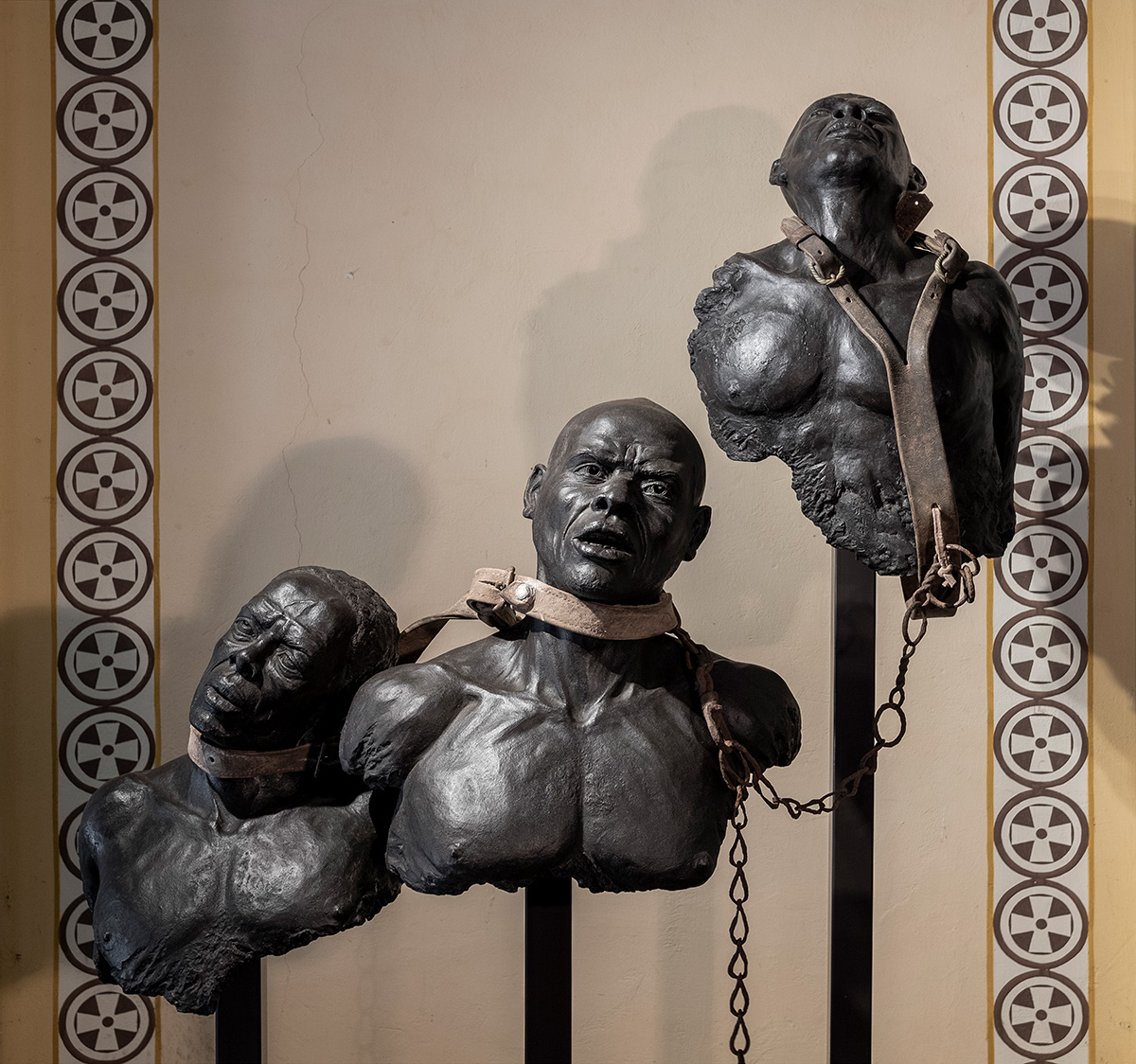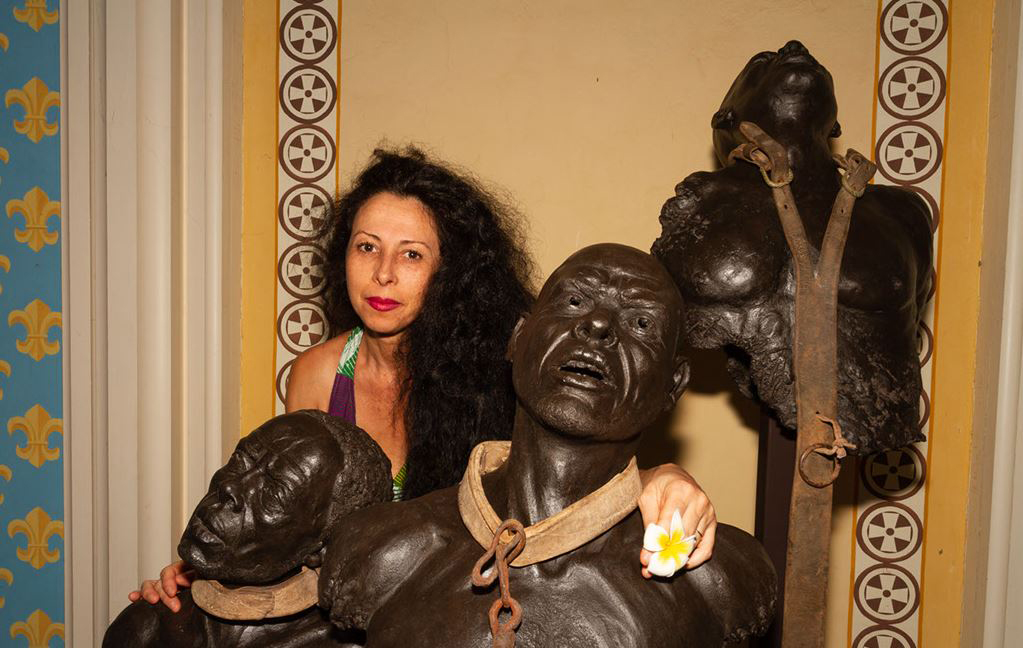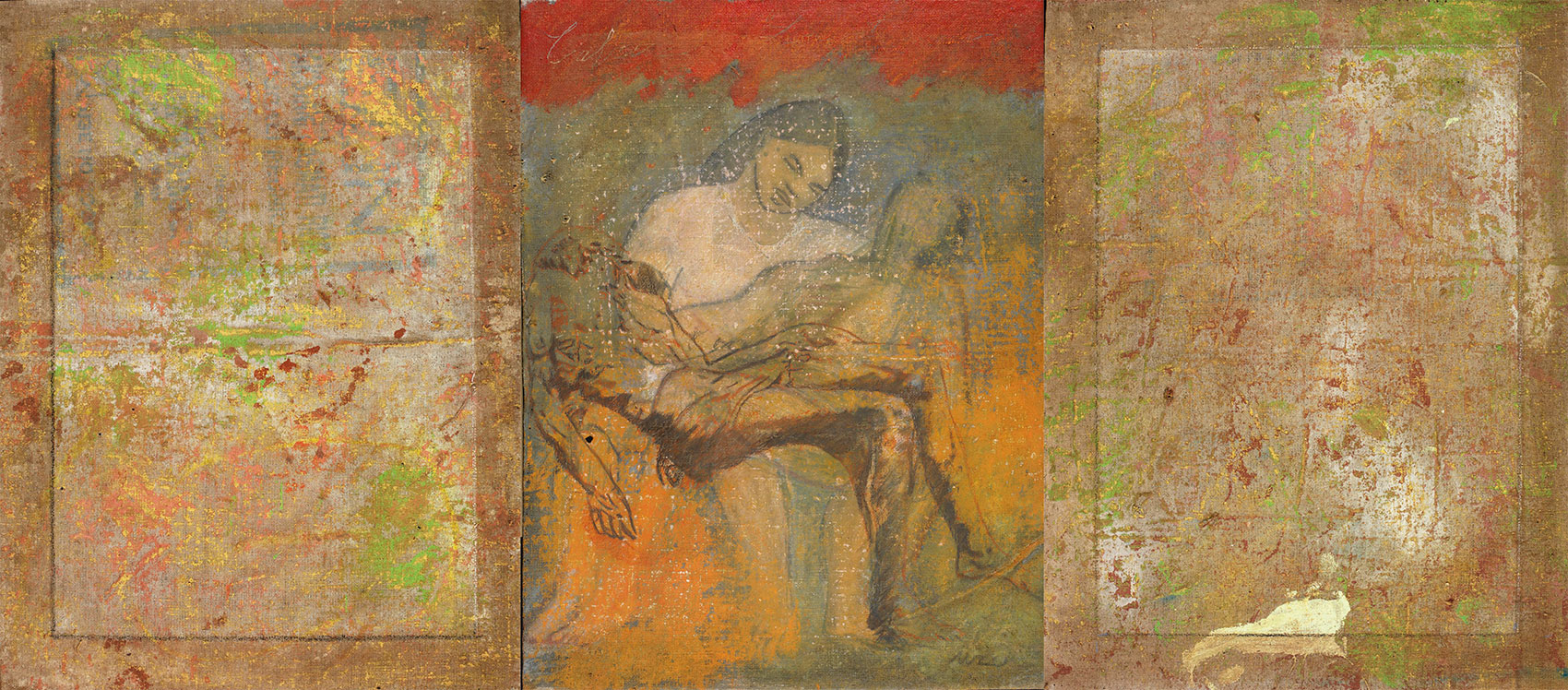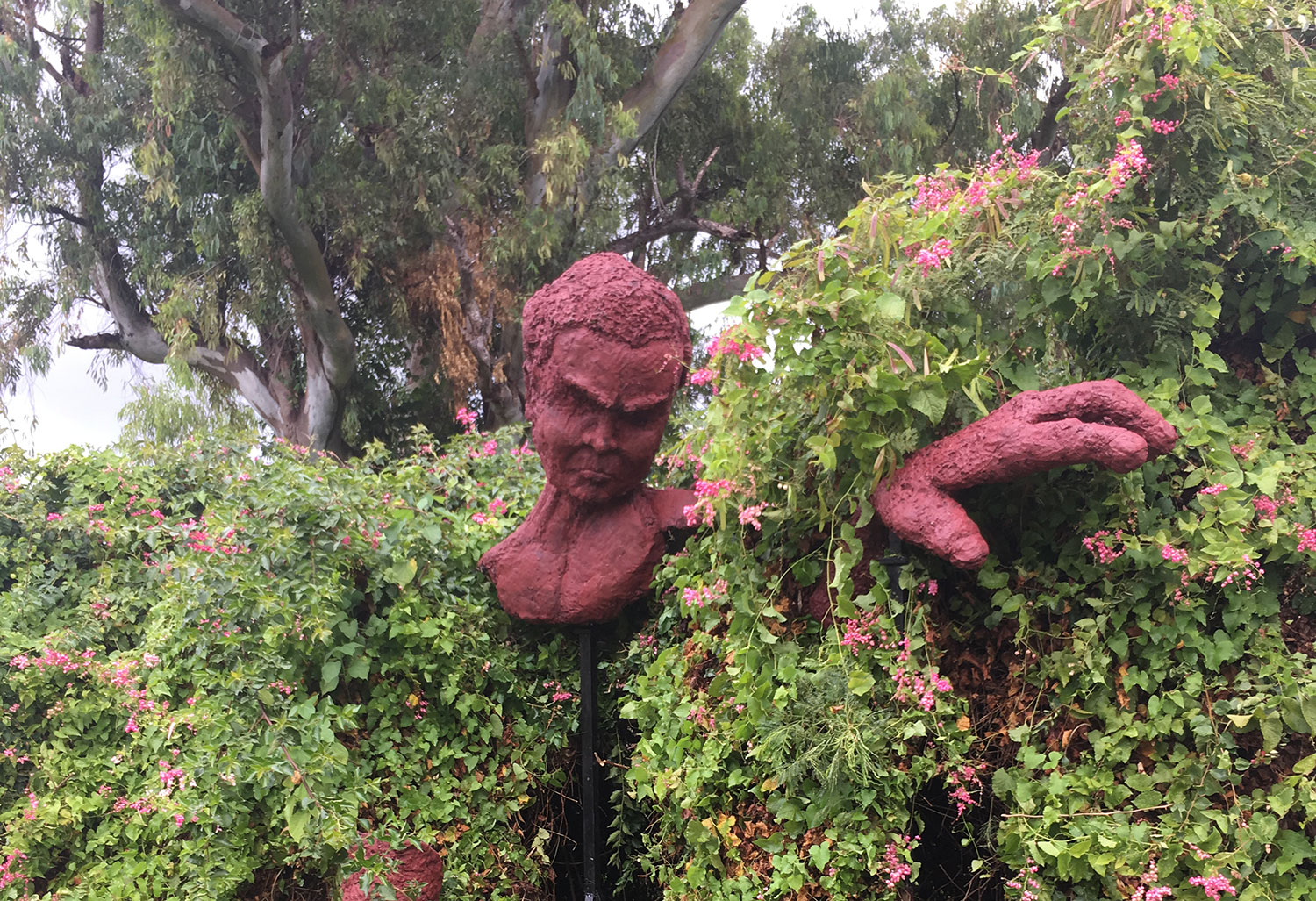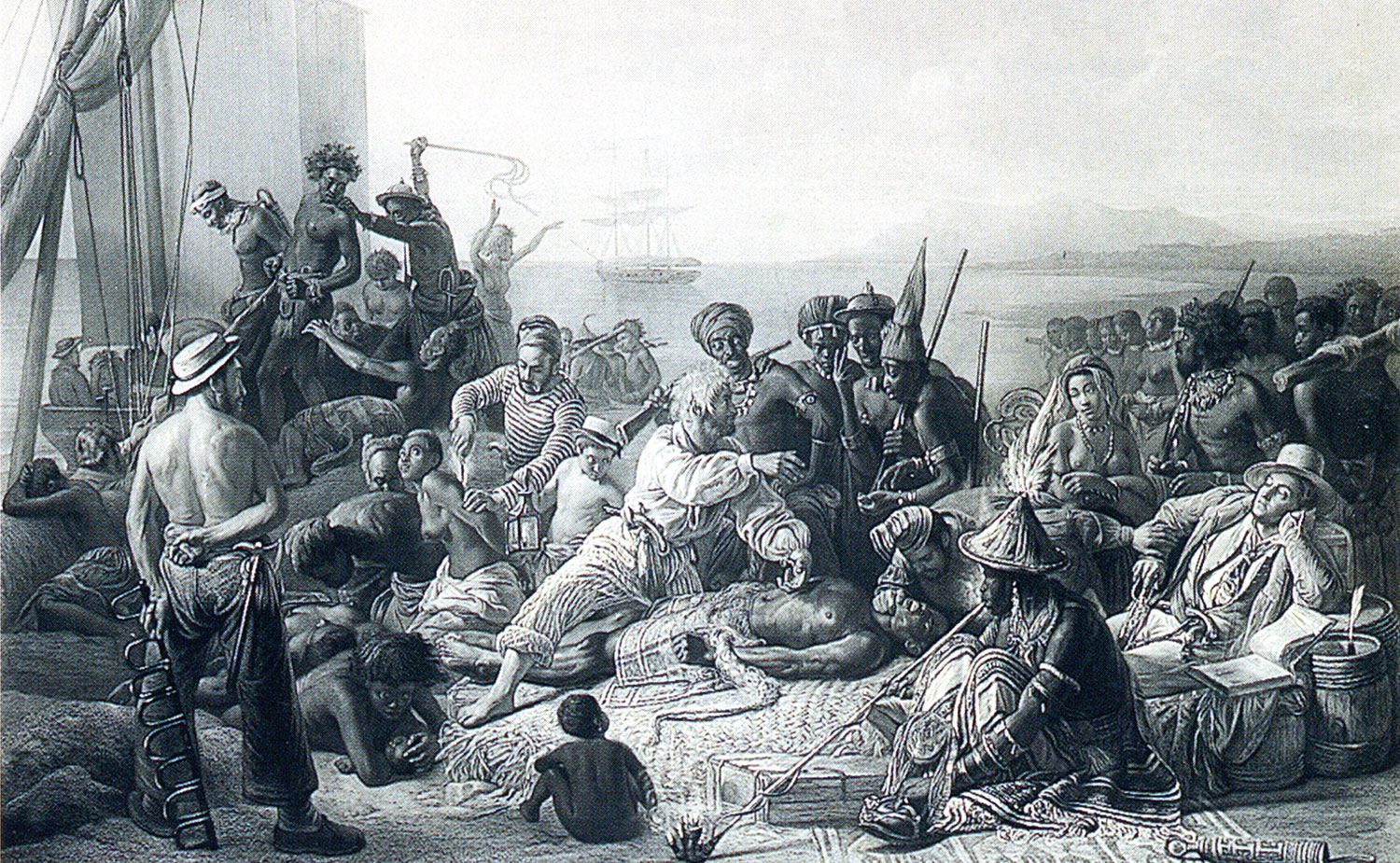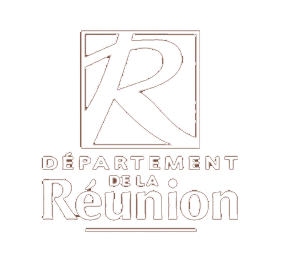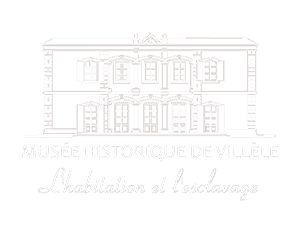Exhibition centred on the painting by Alphonse Garreau ‘Allégorie de l’abolition de l’esclavage à La Réunion’ (Allegory of abolition of slavery in Reunion)
With an installation by Matilde Fossy ‘Dissiper la Brume’ (Dissipating the Mist)
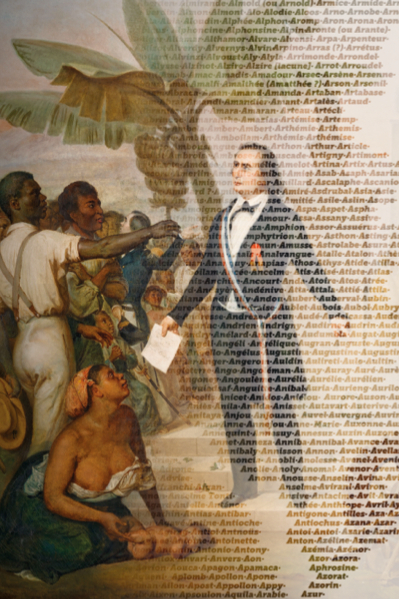 A historical confrontation
A historical confrontation
On 20th December 1848, over 60,000 slaves were freed following a speech given on the Place du Gouvernement square in Saint-Denis by Joseph Napoleon Sarda-Garriga, Commissioner of the French Republic. A year later, the artist Alphonse Garreau, who had settled on the island, painted a picture evoking the event. Today, the work is referred to as ‘Allégorie de l’abolition de l’esclavage à la Réunion’.
The artist’s vision is one of power, order and work. The central character is Sarda-Garriga. The painting expresses a clear message: liberty goes hand-in-hand with the obligation to work. The newly freed slaves in the crowd remain totally anonymous, with no power of expression.
Revisiting ‘Allegory …’ by giving a presence to the slaves widens the meaning of this work, steeped in history. The project of the Léon Dierx art gallery consists in combining history and contemporary art.
‘Dissiper la brume’, an installation created especially for the exhibition by the artist Mathilde Fossy, encourages us to follow the meanders of history. The names given to the slaves in 1848, at the heart of Mathilde Fossey’s artistic expression, reflect present-day patronymics, echoing the painting by Garreau, like a new allegory that takes into consideration the temporality of the last 170 years.
A three-part exhibition
The first part consists in lithographs and etchings from the collections of various cultural structures of the Departmental Council, all the works being linked to the denunciation of the slave trade and the servile colonial system. From late 18th-century etchings by intellectuals of the French Enlightenment to etchings linked to the first abolition in 1794, from the many etchings criticising the slave trade during the first half of the 19th century to emblematic paintings commemorating the end of slavery in England and France, the visitor follows the historical evolution of the abolitionist discourse and its expression by various artists, through a selection of original works and reproductions.
The second section focuses on the events which took place in Reunion in 1847-1848, through the works of two artists living on this island during that period: Antoine Louis Roussin (1819-1894) and Adolphe Potémont (1828-1883). Through their lithographs, often satirical, they evoke the end of slavery, abolition and the reactions of the population faced with this historical event during the months that overturned the island’s history. The painting by Alphonse Garreau is displayed in this part of the exhibition. Allégorie de l’abolition de l’esclavage à la Réunion’ (Allegory of the abolition of slavery in Reunion) is conserved at the Quai Branly Jacques Chirac Museum in Paris and has returned to Reunion 170 years after its creation.
In the third part, Dissiper la brume (Dissipating the Mist), a work by Mathilde Fossy, takes us beyond the picture itself. The installation invites visitors to wander around a space punctuated by sheets of Plexiglas. The panels have been engraved with the names of slaves freed in 1848, forming a symbolic crowd. The act of making our way between the names also represents a movement between past and present, that each one of us is part of. The choice of the transparent support reflects a desire to strip down, revealing the truth of the event, a certain desire for clarification.
